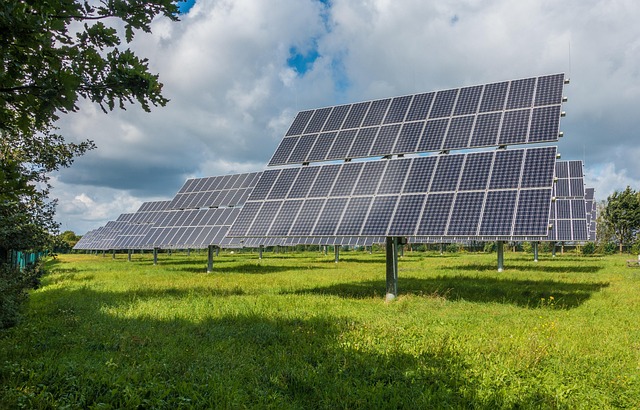Selecting optimal fuel types for hot water is crucial, varying by environment from commercial kitchens to residential areas, schools, and hospitals. Evaluating local fuel sources, like natural gas or renewable options (solar, geothermal), based on infrastructure and geographical features is essential. Solar and geothermal power offer sustainable solutions with reduced carbon footprints, enhanced energy security, and minimized environmental impact compared to traditional fossil fuels. A cost-benefit analysis, considering setup costs, maintenance, and long-term savings, guides informed decisions aligning with financial goals and consistent hot water availability.
Evaluating fuel type availability in your area is crucial for meeting your hot water needs efficiently and sustainably. This comprehensive guide takes you through a step-by-step process, from understanding specific hot water requirements for diverse settings to assessing local fuel sources and their distribution networks. We also explore renewable alternatives like solar and geothermal energy, analyze environmental impacts, and conduct a cost-benefit analysis to help you make informed decisions that save money and protect the environment.
- Understand Hot Water Needs: Defining Requirements for Different Settings
- Assessing Local Fuel Sources: Availability and Distribution Networks
- Exploring Renewable Options: Solar, Geothermal, and Other Alternatives
- Analyzing Environmental Impact: Emissions and Sustainability Considerations
- Cost-Benefit Analysis: Budgeting and Long-Term Savings Potential
Understand Hot Water Needs: Defining Requirements for Different Settings

Understanding hot water needs is a crucial step in evaluating fuel type availability for various settings. Different environments and applications require specific hot water temperatures and flow rates, dictating the necessary heating capacity and energy sources. For instance, commercial kitchens demand higher temperature water for efficient dishwashing, while residential areas typically require lower settings for bathing and laundry. Schools and hospitals have unique needs as well, often requiring consistent hot water supply for hygiene purposes and large-scale meal services.
Identifying these hot water needs allows for the selection of suitable fuel types. In areas with abundant natural gas infrastructure, this fuel is often chosen for its efficiency and affordability in heating water. Solar energy, another viable option, becomes appealing in regions with ample sunlight, offering a sustainable alternative to meet varying hot water demands. Proper assessment ensures that the chosen fuel type aligns with the specific hot water requirements of the local community or establishment, promoting energy conservation and cost-effectiveness.
Assessing Local Fuel Sources: Availability and Distribution Networks

When evaluating fuel type availability in an area, assessing local sources is paramount, especially for meeting hot water needs. The accessibility and distribution networks of various fuels play a significant role in determining their practicality for residential, commercial, or industrial use. For instance, natural gas is widely distributed through pipelines, making it a convenient choice for many regions, ensuring a steady supply to homes and businesses for heating and hot water generation.
In contrast, renewable energy sources like solar and geothermal may have varying availability based on geographical location. Solar power, for example, relies on sunlight, making it more viable in areas with ample sunshine. Geothermal energy, though less common, can be a consistent source of heat and hot water in regions with suitable geological formations. Assessing these factors is crucial in determining the most efficient and sustainable fuel options to meet local hot water needs.
Exploring Renewable Options: Solar, Geothermal, and Other Alternatives

In the quest for sustainable energy solutions, exploring renewable alternatives is no longer an option but a necessity, especially as we navigate towards meeting our ever-growing hot water needs. Among the plethora of options, solar and geothermal energy stand out as promising candidates. Solar power harnesses the abundant energy from sunlight, utilizing photovoltaic cells to convert it into electricity or heating systems for water. This clean and renewable source is increasingly accessible with advancements in technology, making it a viable option for both residential and commercial applications.
Geothermal energy, on the other hand, leverages the Earth’s internal heat to provide a consistent and reliable source of power. Geothermal heat pumps, for instance, can efficiently manage hot water needs by extracting warmth from the ground, even in colder climates. This renewable resource offers a stable and cost-effective solution, especially in regions with suitable geological formations. By embracing these alternatives, communities can reduce their carbon footprint, enhance energy security, and contribute to a greener future while addressing their hot water requirements effectively.
Analyzing Environmental Impact: Emissions and Sustainability Considerations

When evaluating fuel type availability, a crucial aspect often overlooked is the environmental impact and sustainability considerations associated with each option. As we explore different fuel sources for hot water needs, it’s essential to analyze the emissions profiles and long-term ecological effects. Fossil fuels, traditionally dominant in many areas, contribute significantly to greenhouse gas emissions, air pollution, and climate change. Their extraction and transportation also pose environmental risks, from oil spills to habitat disruption.
Renewable alternatives like solar and geothermal energy offer a more sustainable path. These clean energy sources have minimal direct emissions and reduce our carbon footprint. Solar panels, for instance, harness the sun’s power, while geothermal systems utilize earth’s internal heat, both providing reliable hot water without damaging the environment. This shift towards renewable fuels not only addresses climate change but also contributes to a healthier ecosystem, ensuring a more sustainable future to meet our hot water needs.
Cost-Benefit Analysis: Budgeting and Long-Term Savings Potential

When evaluating fuel types for hot water needs, a crucial consideration is the cost-benefit analysis, especially with an eye towards long-term savings potential. Different fuel sources have varying economic landscapes, from upfront installation costs to ongoing operational expenses. For instance, while electric heaters might have lower initial outlay, they could lead to higher utility bills over time, depending on local electricity rates. On the other hand, natural gas systems often offer a more affordable option for daily hot water use due to its relative abundance and competitive pricing, assuming access to a reliable gas line.
Performing a thorough cost-benefit analysis involves budgeting not just for initial setup but also factoring in maintenance, replacement, and energy efficiency gains over the lifespan of the system. This long-term perspective is essential as it allows homeowners to make informed decisions that align with their financial goals. By understanding the trade-offs between fuel types, individuals can choose solutions that offer sustainable savings without compromising on hot water availability.






